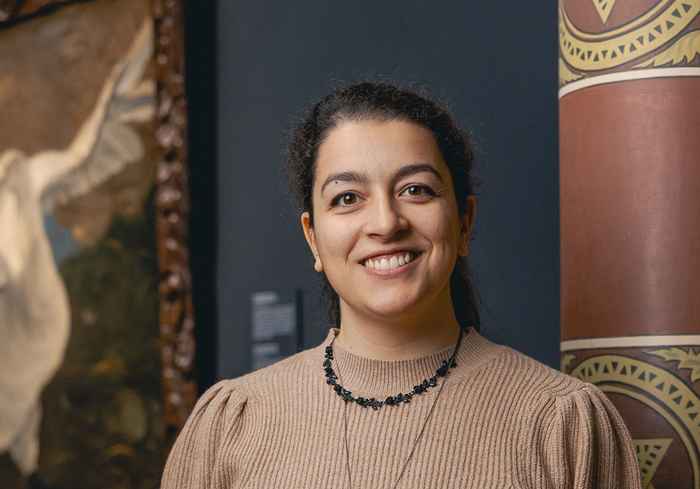Fabiana Di Gianvincenzo is MSCA postdoctoral fellow on PaintWatch project
Using volatile emissions to assess the ageing of oil paintings
4 November 2025
Di Gianvincenzo has joined the HIMS Molecular Photonics research group in the team of Prof. Katrien Keune, who is Head of Science at the Rijksmuseum. There, Dr Alba Álvarez-Martín will contribute to the research, as will Prof. Emma Schymanski at the University of Luxembourg and Dr Saer Samanipour at the HIMS Analytical Chemistry research group.
No impact on the integrity of the artwork
Many historic oil paintings suffer from degradation processes resulting in, for instance, paint delamination or the formation of disfiguring new components. Behind such damaging effects lies the complex chemistry of curing, ageing and degradation of the oil paints used by the old masters. Unravelling this chemistry is the topic of many scientific efforts.

The PaintWatch project now aims to add an important tool to such studies. Di Gianvincenzo and co-workers set out to develop a quick and confident method to assess the degradation status by measuring the minute emissions of volatile chemicals originating from the oil paint. A key feature of the method is that it will have no impact on the integrity of the artwork, thus allowing frequent analysis and monitoring of ongoing degradation processes. Since the method will be completely solvent-free, it will contribute to the implementation of environmentally-friendly solutions in the field of heritage science. Furthermore, since the volatile emissions can be damaging to other objects and human health, monitoring of volatile emissions is a fundamental step to increase the overall safety of painting collections.
An efficient and reliable method
PaintWatch will take all necessary steps toward using volatiles analysis (or headspace analysis) for the assessment and conservation of oil paintings. It will develop an optimised protocol to sample volatile emissions, coupled with gas chromatography-mass spectrometry analysis. Emissions from oil paint mock-ups, naturally and artificially aged, will be studied alongside historical oil paintings from the collection of the Rijksmuseum, and statistical and multivariate data analysis methods will be used to identify significant trends. This will ultimately result in an efficient and reliable method to correlate volatile emissions from paintings to their health state.